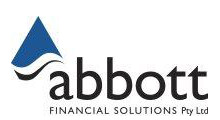Why high-quality bonds are a logical alternative to hybrid securities.
Some of the biggest changes on financial markets that are likely to have a profound impact on many retail investors can occur without attracting too much attention.

The Australian Prudential Regulation Authority (APRA), the regulator of banks, superannuation funds and other financial institutions, flagged such a change in September when it effectively sounded the death knell for hybrid securities.
Investors have been using hybrids for decades as a way to access regular floating rate income payments and, in the case of some issues, attached tax franking credits.
The hybrid issuers– of which the vast majority are banks – have been using these instruments to meet APRA’s regulatory Tier 1 (AT1) capital obligations that require them to hold sufficient liquidity to meet any future financial crisis.
But the hybrids landscape is set to change – not immediately, but over the next one to eight years as the 200 or so current active hybrid issues reach their specified call date , when investors’ face value principal investment is expected to be repaid.
Why is this happening? In the wake of several recent offshore bank failures, and after extensive industry consultation, APRA is proposing banks and other hybrid issuers phase them out and instead use cheaper and more reliable forms of capital that would absorb losses more effectively in times of financial stress.
“The proposed changes draw on the lessons of last year’s global banking turmoil where several US and European banks either failed or needed to be resolved in short succession, with a number of governments having to intervene to minimise the risk of contagion and financial system instability,” APRA noted in a statement issued in September.
APRA now wants hybrid issuers to move to other forms of capital instruments such as subordinated bonds, which are designated as Tier 2 capital. It’s important to note that subordinated bonds are unsecured and rank below more senior forms of debt securities such as senior and senior secured bonds.
Investors in hybrid securities face conversion risk as well as the risk issuers can choose to indefinitely defer making interest payments.
The risks in hybrids
Australia’s banking system is indubitably strong. We haven’t had a major banking crisis for over 30 years, since the respective collapses of the State Bank of Victoria and the State Bank of South Australia in the early 1990s, along with some smaller financial institutions.
“The purpose of AT1 is to stabilise a bank so that it can continue to operate as a going concern during a period of stress, and support resolution with the capital that is needed to prevent a disorderly failure,” APRA stated.
“Unfortunately, international experience has shown that AT1 does not fulfil this function in a crisis situation due to the complexity of using it, the potential for legal challenges and the risk of causing contagion. These risks are heightened in the Australian context due to the unusually high proportion of AT1 held by retail investors.”
Hybrids, particularly those issued by banks, have long been considered as “safe” income products by investors. Yet, that would be to overlook the higher-risk equity characteristics of hybrid issues given that investors’ capital can be converted into an issuer’s shares.
That leads to conversion risk, because hybrid investors take on the risk that share price volatility near the date of the conversion into equity could significantly impact the value of the hybrid security. Most hybrids are structured to allow the regulator to force a conversion to shares at its discretion, irrespective of the initial prescribed call date.
If the issuer’s share price has fallen at the conversion date since the time of the initial investment, investors will in effect take a capital loss. Hybrids typically behave more like shares in a scenario where the issuer, or broader market, is financially stressed. In addition, hybrid securities have often produced negative monthly returns during past Australian equity market downturns.
Another factor with hybrids is deferral risk, whereby issuers can choose to indefinitely defer making interest payments. Most issues usually include wording to the effect that the issuer has no obligation to make up any missed payments.
Floating interest payments are directly impacted by general interest rate levels. If rates rise, interest payments rise; if rates fall, interest payments fall. A significant fall in interest rates would substantially diminish the returns for investors in hybrid securities.
It’s worth keeping this in mind in the context of likely cuts to interest rates.
Investors also should be aware of liquidity risk. For some hybrid security holders who wish to sell, a lack of market liquidity means they may find it difficult to locate a buyer willing to pay a high enough price, or in a stressed market scenario may not be able to redeem their capital.
Looking to bonds
Hybrid securities, because of their equity-like characteristics, are different to high-quality bonds issued by governments, large organisations, and many companies.
Bonds generally provide more capital stability for medium to long-term investors than shares, which don’t offer an agreed schedule of dividend payments or the full principal repayment at the end of a given term.
The important role of bonds and bond exchange traded funds (ETFs) in dampening equity market volatility should not be underestimated.
Well diversified bond funds holding high-quality, investment grade fixed interest securities are a lower-risk option and perform the important role of adding ballast to portfolios to counterbalance potential financial shocks in equity markets.
This article has been reprinted with the permission of Vanguard Investments Australia Ltd. Copyright Smart Investing
GENERAL ADVICE WARNING
Vanguard Investments Australia Ltd (ABN 72 072 881 086 / AFS Licence 227263) (VIA) is the product issuer and operator of Vanguard Personal Investor. Vanguard Super Pty Ltd (ABN 73 643 614 386 / AFS Licence 526270) (the Trustee) is the trustee and product issuer of Vanguard Super (ABN 27 923 449 966).
The Trustee has contracted with VIA to provide some services for Vanguard Super. Any general advice is provided by VIA. The Trustee and VIA are both wholly owned subsidiaries of The Vanguard Group, Inc (collectively, “Vanguard”).
We have not taken your or your clients’ objectives, financial situation or needs into account when preparing our website content so it may not be applicable to the particular situation you are considering. You should consider your objectives, financial situation or needs, and the disclosure documents for the product before making any investment decision. Before you make any financial decision regarding the product, you should seek professional advice from a suitably qualified adviser. A copy of the Target Market Determinations (TMD) for Vanguard’s financial products can be obtained on our website free of charge, which includes a description of who the financial product is appropriate for. You should refer to the TMD of the product before making any investment decisions. You can access our Investor Directed Portfolio Service (IDPS) Guide, Product Disclosure Statements (PDS), Prospectus and TMD at vanguard.com.au and Vanguard Super SaveSmart and TMD at vanguard.com.au/super or by calling 1300 655 101. Past performance information is given for illustrative purposes only and should not be relied upon as, and is not, an indication of future performance. This website was prepared in good faith and we accept no liability for any errors or omissions.
Important Legal Notice – Offer not to persons outside Australia
The PDS, IDPS Guide or Prospectus does not constitute an offer or invitation in any jurisdiction other than in Australia. Applications from outside Australia will not be accepted. For the avoidance of doubt, these products are not intended to be sold to US Persons as defined under Regulation S of the US federal securities laws.
© 2024 Vanguard Investments Australia Ltd. All rights reserved.


